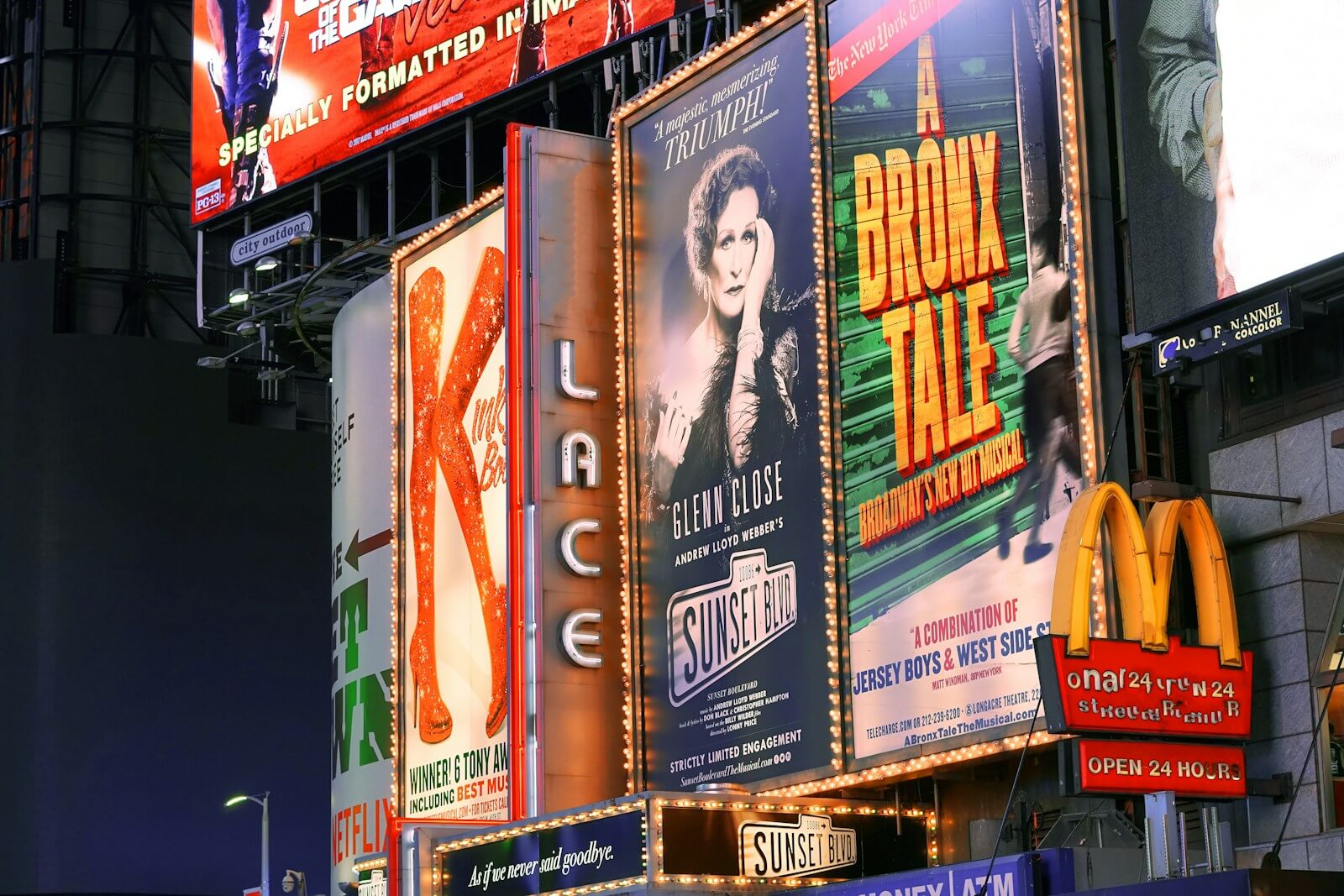Creating a movie poster is much more than just assembling images and text. It’s an art form that requires a deep understanding of design principles, cultural context, and storytelling. This article delves into the intricate process of designing a movie poster, exploring the blend of creativity and strategy behind these iconic pieces. Movie Poster Ideas? Whether you’re a budding designer, a film enthusiast, or a professional in the creative industry, understanding the anatomy of movie poster design can enrich your appreciation of cinema and its marketing. Discover the secrets to making a visually compelling and strategically effective movie poster for minimalist.
Outline
- What is the Importance of a Movie Poster?
- A Brief History of Movie Poster Design
- Key Elements of Effective Movie Poster Design
- The Role of Typography in Movie Posters
- Choosing the Right Template for Your Movie Poster
- How Does Photoshop Enhance Movie Poster Design?
- The Impact of Size and Scale in Movie Posters
- Understanding Billing Credits in Movie Posters
- How to Design a Movie Poster for Different Genres
- Future Trends in Movie Poster Design
What is the Importance of a Movie Poster?
A movie poster does more than just announce a film; it acts as a crucial marketing tool that encapsulates the essence of a movie to attract its audience. It combines aesthetic appeal with informational content to create intrigue and excite potential viewers. Movie posters can set the tone and mood for the film, hinting at the narrative without giving too much away, making them a pivotal point of contact between the movie and its audience.
A Brief History of Movie Poster Design
From early stone lithography to the advanced digital techniques of today, the evolution of movie poster design mirrors the development of visual arts and technology. Initially simple and informational, these posters have transformed into complex pieces of art that reflect the theme and emotion of their respective films. Understanding this history not only provides context but also showcases the cultural shifts in how movies are marketed and perceived over the decades.
Key Elements of Effective Movie Poster Design
The effectiveness of a movie poster boils down to several key elements: imagery, color palette, typography, and the overall composition. Each component must be carefully chosen and utilized to not only represent the film accurately but also to catch the eye of the viewer, make a memorable impression, and provoke curiosity and excitement.
The Role of Typography in Movie Posters
Typography in movie posters is not just about readability but also about setting the right tone for the film. The choice of font and text arrangement can convey a range of emotions and messages, from suspense and fear in a horror movie to whimsical and light-hearted vibes in a comedy. Effective typography can significantly influence the viewer’s perception and expectations of the film.
Choosing the Right Template for Your Movie Poster
Templates can be a starting point for designing a movie poster, especially for novices or those under tight deadlines. However, customization is key to ensuring that the template serves the movie’s unique narrative and aesthetic needs. This section would guide through selecting and customizing templates to create original and impactful movie posters.
How Does Photoshop Enhance Movie Poster Design?
Photoshop is a powerful tool in the arsenal of poster designers, offering vast possibilities for manipulating images, adjusting colors, and adding effects that enhance the visual storytelling of a movie poster. Mastery of Photoshop can transform a basic poster into a captivating piece of art.
Expert Comment on Movie Poster Ideas for Beginners
Jacob Reynolds, an acclaimed film industry consultant known for his expertise in promotional aesthetics, shared valuable insights on innovative poster ideas that captivate audiences. Reynolds emphasized, “For the best movie experiences, the poster must encapsulate the essence of the film through artful and immersive visuals. One effective approach is using dramatic contrasts in color, such as moody color palettes for thrillers or optimistic color palettes and pastel colors for lighter genres.”
He highlighted the role of artists and graphic designers in crafting these visuals, explaining, “Modern publishing software like Adobe InDesign has revolutionized how posters are designed and reproduced, particularly techniques once exclusive to lithographic printing. Now, these elements can be digitally mastered to create stunning, high-quality prints distributed across multiple media.”
Discussing specific elements that make a movie poster stand out, Reynolds noted, “The integration of a clever tagline with the release date in white or blood-red text can be incredibly striking. It sets the emotional tone, whether it’s the starkness of white or the intensity of red, much like blood, which instantly draws the eye.”
Focusing on genre-specific design, he continued, “For drama genre films, incorporating a poignant film still, silhouetted figures, or even cinematic techniques that focus on cinematography or characters can deeply affect the viewer’s anticipation. It’s about crafting a story before the audience even sees the movie.”
Reynolds also touched on the inclusion of innovative themes such as space or planetary settings and robotic-inspired graphics for science fiction posters, stating, “These elements can be tremendously effective in creating a memorable and visually appealing poster. They not only reflect the film’s theme but also enhance the immersive experience, promising a journey that the audience can look forward to.”
In conclusion, Reynolds stressed the importance of how every element from the film—whether it’s the cinematography, the movie stars involved, or even the chosen graphical techniques—contributes to the identity of the film. “It’s about more than just promoting a film; it’s about creating a behind-the-scenes narrative that is as engaging as the film itself,” he noted, illustrating the depth of thought behind memorable movie poster designs.
The Impact of Size and Scale in Movie Posters
The size and scale of a movie poster can affect its visibility and the way its message is conveyed. Larger posters can make a more significant impact but require a keen understanding of space and composition to ensure that the message is not lost in the size. This section explains how to balance these elements effectively.
Understanding Billing Credits in Movie Posters
For Movie Poster Ideas, Billing credits are not just a legal requirement but also a component of design that needs careful integration into the layout of a movie poster. This part of the design needs to be handled delicately to maintain aesthetic harmony while providing due recognition to the cast and crew.
How to Design a Movie Poster for Different Genres
Different genres require different approaches in poster design to convey the appropriate mood and attract the target audience. This section would explore how to tweak design elements to suit genres like horror, comedy, drama, and action, reflecting their unique themes and audience expectations.
Future Trends in Movie Poster Design
With advancements in digital technology and changes in movie marketing strategies, movie poster design is constantly evolving. This final section predicts future trends and discusses how designers can stay ahead of the curve by adopting new techniques and embracing innovative ideas.
Expert Comment on Movie Poster Ideas
Dr. Evelyn Masters, a leading authority in graphic design and visual communication, shared her insights on the complexities and evolving trends in movie poster design. Dr. Masters highlighted the intricate anatomy of a movie poster and how it serves as a crucial tool for filmmakers and marketing teams. She noted, “In 2023, the integration of iconic movie elements and cutting-edge design techniques has transformed how we create compelling visuals. For instance, using Adobe Photoshop or Affinity Photo, graphic designers can manipulate images to enhance the movie title or bring out the essence of the film’s theme.”
She further elaborated on how movie studios now prefer photo-dominant designs that make a movie poster in Photoshop more vivid and engaging, particularly for genres like action movies or thrillers. “The right mood and atmospheric designs are vital,” she added, “as they help entice the audience through expressive photography, atmospheric lighting, and use of color, such as inky blacks and blues or ethereal luminosity that suggests a specific emotional mood.”
Discussing technical advancements, Dr. Masters mentioned, “We’ve seen an incredible shift towards digital software, allowing poster artists to experiment with elements like glow and other light effects, or even create cool photo manipulations that were once impossible.” She emphasized the importance of tools like Adobe InDesign or Affinity Publisher, especially when designing for both print and online channels, where a poster must first catch the viewer’s eye across diverse platforms.
Dr. Masters also pointed out the increasing use of hand-drawn elements and lithographic printing techniques that add a unique, tactile quality to film poster designs, even in an overwhelmingly digital era. This blend of traditional and modern techniques helps maintain the brand identity of the film, while also appealing to touch device users who explore by touch.
Reflecting on design strategies, she stated, “When you design a poster, you must condense the plot or theme of the film into a single, impactful image. This includes incorporating elements like taglines, character portraits, and even weaponry or ghostly shapes to suggest more about the film’s plot.” Dr. Masters praised the use of movie poster design templates as a starting point for creating memorable and impactful designs that resonate with audiences, emphasizing that the choice of movie poster size, typography, and poster style should align with the film’s brand-marketing approach.
In conclusion, Dr. Masters highlighted the strategic use of elements like movie stars’ character photographs and facial expressions, which play a significant role in posters for genres such as romantic comedies or drama. She said, “These posters not only need to look good on billboards and magazines but also need to convey the urgency and energy of the movie, using movement and color to draw in viewers.” Her perspective underscores the complexity and depth of movie poster design as a critical element of cinema art and marketing.
Conclusion on Movie Poster Ideas
- Creativity and Strategy: Effective movie poster design requires a blend of both.
- Cultural and Historical Context: Understanding the evolution of designs can enhance appreciation.
- Design Elements: Mastery of imagery, typography, and composition is crucial.
- Technological Proficiency: Tools like Photoshop are indispensable in modern poster design.

